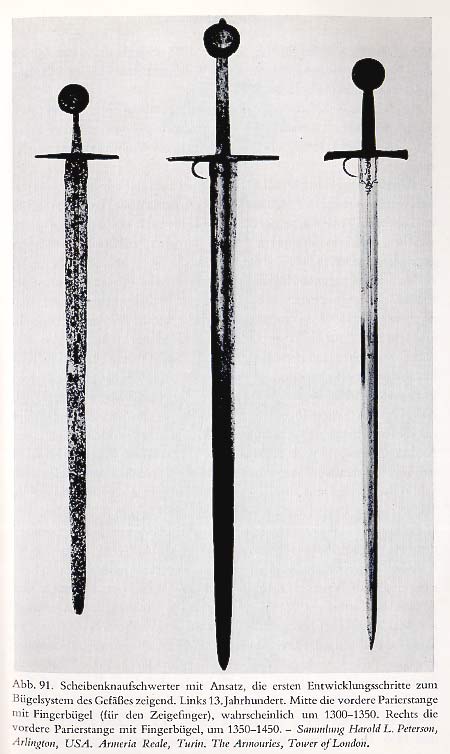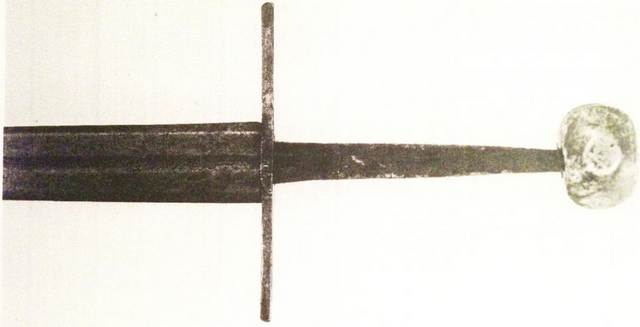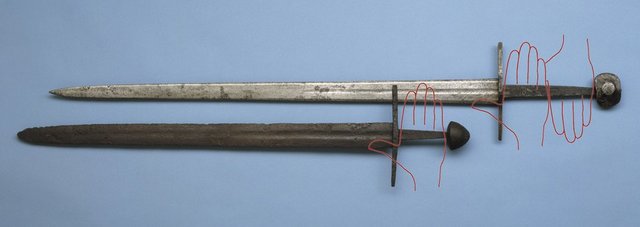What Oakeshott Blade type do you think this sword has?


the one in the middle


| Cornelis Tromp wrote: |
| I think it can be classified as a XIIa, fe roms XIIa.3 also with a short fuller, because the guard has a finger ring, a later dating around 1400-1420 is plausible.
best, |
| Mikko Kuusirati wrote: |
|
The caption says 1300-1350, which seems even more plausible to me considering the sort of transitional nature of the overall design. |
| Mikko Kuusirati wrote: |
| On the other hand, AFAIK simple finger rings or hooks like this appeared sometime around the middle of the 14th Century . |
| Quote: |
| Broad flat blade, edges running nearly parallel to a sudden sharp point, with narrow well-moulded fuller in the upper third. The section is a flat hexagon—i.e. the blade is flat, with edges clearly chamfered, as in Type XVIa. There is a well-made ricasso, almost 2.5-3" long.
|
| Chad Arnow wrote: | ||
I'd call it a XIX with no ricasso. From Oakeshott:
It has the broad flat blade with nearly parallel edges. A defined shortish fuller, a hexagonal section. It lacks only the ricasso. Also, other of these early swords with finger rings were XIX, so I think it fits. XVII? Not pointy enough, even though it's hex in section. XVI? Also not pointy enough for my tastes. |
| Cornelis Tromp wrote: |
| Hi Chad,
it lacks not only the ricasso but also lacks a clean flat hexagonal section and a narrow fuller.basically all the criteria for a XIX ? best, |




